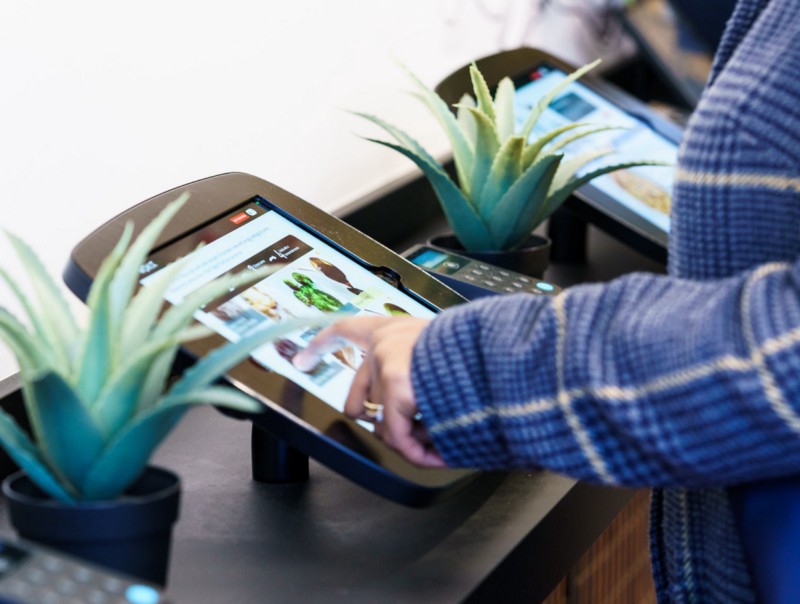WOKIT: healthy, fresh stir-fry in the heart of London. WOKIT creates healthy, locally sourced stir-frys in the heart of London. The company, created in 2014 by founder Richard Martin, became popular in the City and at Borough Market because of its delicious food and fund branding.
The Problem
However, WOKIT quickly started to face the same challenges that have plagued quick service restaurants (QSR):
- Long queues at peak times: inevitably, customers all get hungry at the same time and descend on WOKIT at lunchtime for a bite to eat. This can lead to long queues, a frantic kitchen, and frustrated customers
- Tills require a lot of floor space: to take orders and service customers, WOKIT installed 2 tills at its Cornhill site. However, with only 4 woks in the restaurant, these tills were taking up half as much real estate as the production capacity itself!
- Limited menu and allergen information: by relying only on menu boards behind the counter, WOKIT was restricted by the information it could provide about its menu to customers.
- No digital presence: although WOKIT had cloud-based technology installed in its restaurant — all of it was facing its staff! Customers did not have a way to engage digitally with WOKIT, and WOKIT could not engage digitally with them.
The Solution: Vita Mojo OS
 When WOKIT decided to open a new site on Fleet Street, they reached out to us to install the Vita Mojo OS to unlock the power of cloud-based, customer-facing software in their restaurant. We worked through scoping and discovery with them and they decided to use all three of our modules:
When WOKIT decided to open a new site on Fleet Street, they reached out to us to install the Vita Mojo OS to unlock the power of cloud-based, customer-facing software in their restaurant. We worked through scoping and discovery with them and they decided to use all three of our modules:
- Front of House: we installed six self-service kiosks and enabled pre-ordering on mobile so that customers could discover the WOKIT menu and place their orders digitally — and so that WOKIT staff could focus on making food and hosting. We also installed one EPOS, although it only gets used for drinks or snacks since food orders are easier through the self-service kiosk!
- Back of House: we installed kitchen display screens and the Vita Mojo OS capacity management system to automatically notify staff when to start producing each meal so that it is ready for guests at their requested pick-up time. And the capacity management system breaks down each service into 5 minutes increments to manage demand and prevent too many meals from being ordered at the same time!
- Data Analytics: we provided access to our Data Analytics platform to WOKIT to have a live, holistic view of their finances and operations. Since we captured all of WOKIT’s revenues and customer interactions through the Front of House and we captured inventory and production timing in the Back of House, our Data Analytics platform easily and simply aggregates all of WOKIT’s information in one place — instantly and visible from anywhere!

The results
Once installed, the Vita Mojo OS transformed WOKIT’s operations, bringing their restaurants into the future. Below is a summary of the key results achieved in the new Fleet Street restaurant:
- Increased kitchen capacity by 60%: by not needing tills, WOKIT installed 8 woks and no tills instead of 5 woks and 3 tills!
- 100% of sales are digital: customers now have the choice of ordering on the self-order kiosks or on mobile ahead of time. Both options provide a richer digital experience for the customers, and real-time data for the operator.
- 19% of sales are pre-ordered: once customers have experienced the digital ordering in store, they easily migrate to pre-ordering online, saving them significant time and allowing WOKIT to manage capacity at peak
- Peak throughput is up 27%: with less space tied up for queuing and tills, WOKIT managed to increase throughput over peak by 27% with Vita Mojo OS when compared to their original site
- Increased ATV by 2.6%: by allowing customers more flexibility and clarity on what they are ordering, the Vita Mojo OS interface generated a 2.6% higher Average Transaction Value than at WOKIT’s original site

